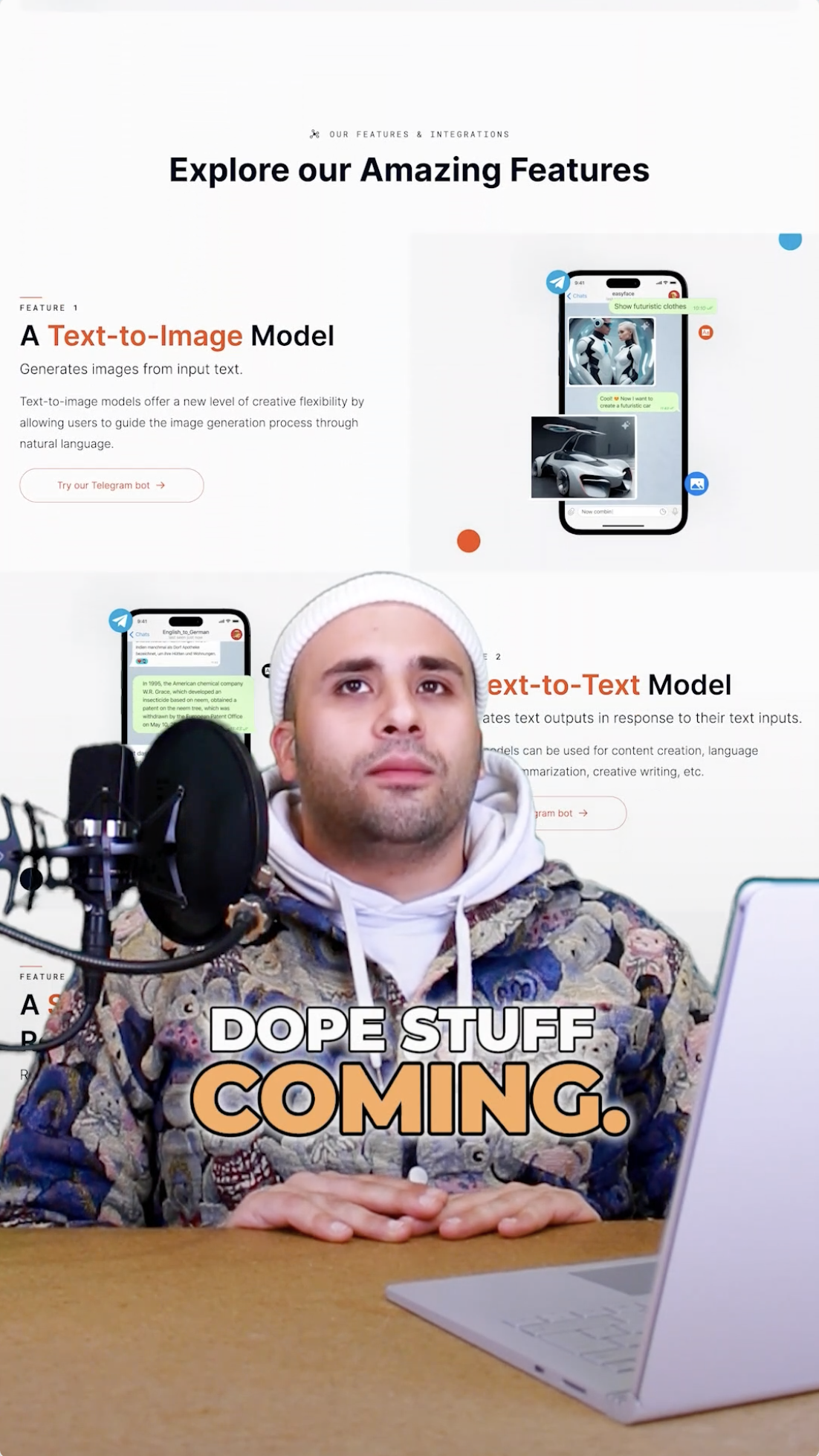AI Art: Navigating the Legal Landscape with Insights and Considerations
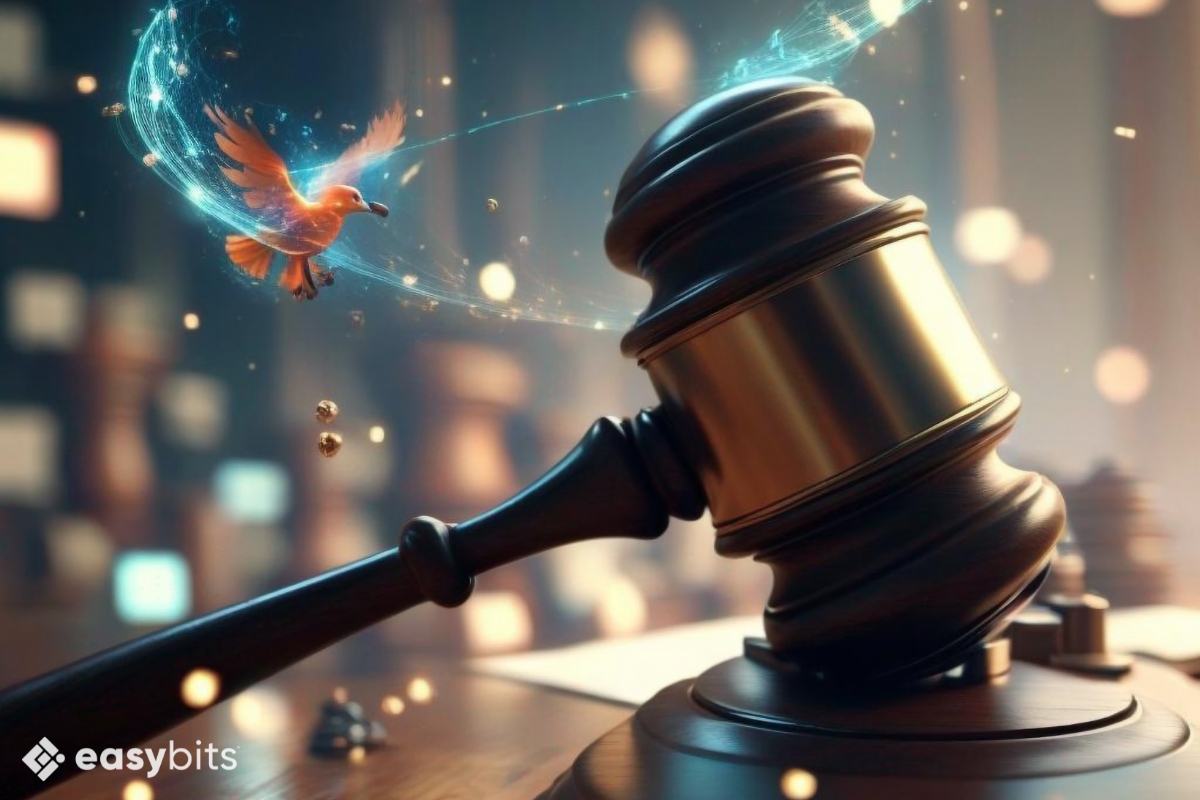
The rapid advancement of artificial intelligence (AI) has led to significant developments in various fields, including the creative arts, technology, and business. However, these advancements have also introduced complex legal and ethical challenges, particularly concerning copyright and regulatory frameworks. This article explores the intersection of AI, copyright law, and the new regulatory landscape, focusing on the EU's AI Act and its implications for open-source AI while comparing it to the United States, as well as the challenges posed by AI-generated content in the realm of copyright.
Fundamentals of Copyright Law
Understanding the fundamentals of copyright law is crucial for navigating the complex legal landscape of AI-generated art. Copyright law protects original works of authorship, ensuring that creators retain control over their intellectual property. By grasping the basics of copyright law, content creators can better safeguard their work, avoid legal pitfalls, and make informed decisions about using and distributing AI art.
Copyrightable Works and Intellectual Property
Copyright law aims to protect original works of authorship, including literary, dramatic, musical, artistic, and other intellectual works. This protection extends to a wide array of creative outputs, ensuring that creators can retain control over their intellectual property. Copyrightable works include books, poems, blogs, articles, songs, podcasts, audio recordings, films, videos, online video courses, visual artwork, drawings, graphic designs, and computer software and code.
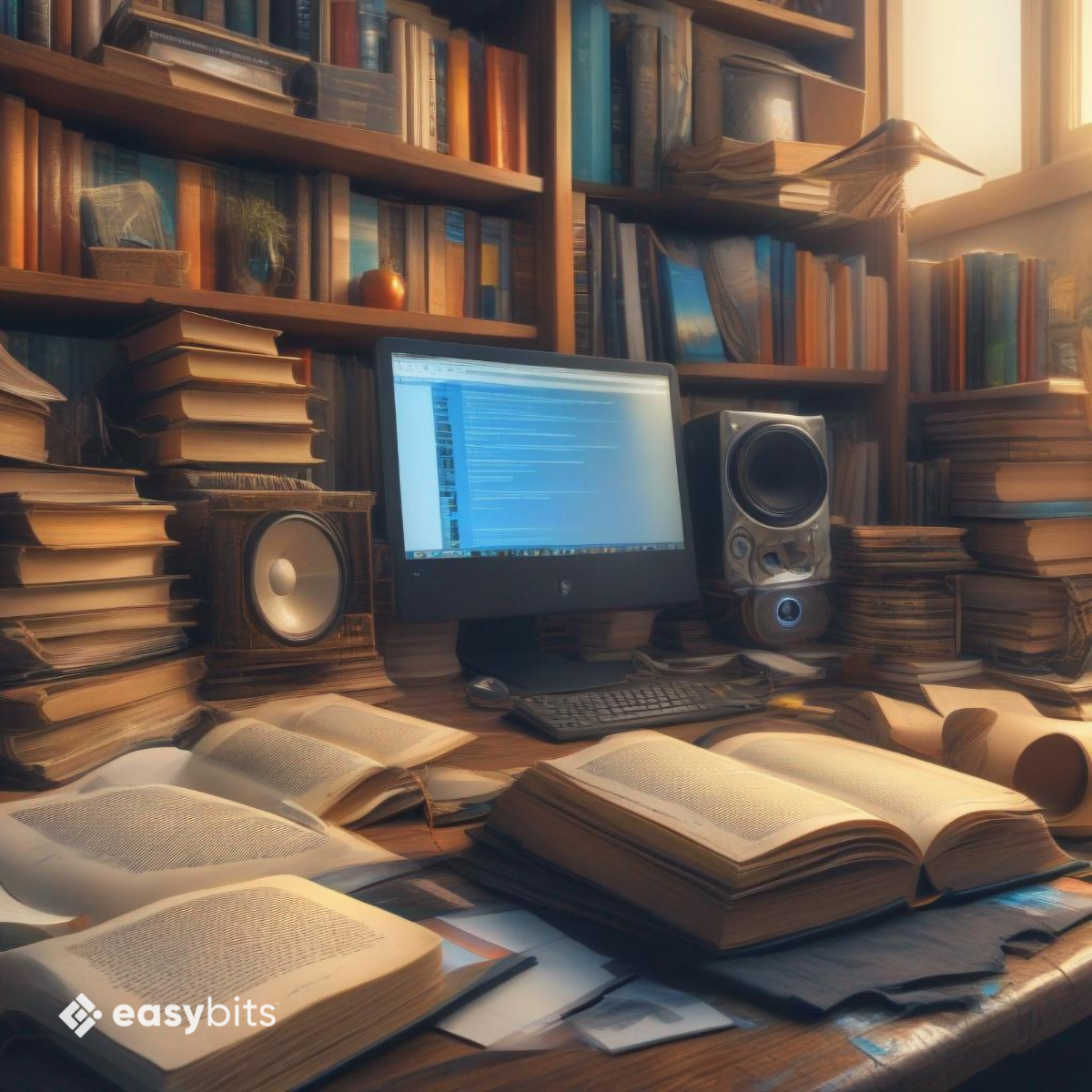
By understanding what types of works are protected under copyright law, creators can better navigate the challenges of using and creating AI-generated content, ensuring their rights are preserved and respected.
Understanding Copyright Ownership and Transfer
The creator or author of original work automatically holds the copyright by default. This means that as soon as an original work is created and fixed in a tangible medium, the author owns the copyright. This ownership grants the creator exclusive rights to use, distribute, and license the work. However, creators have options for how they can manage and transfer these rights, including transferring the copyright, licensing the copyright, or retaining the copyright while permitting certain uses of the work.
The Fair Use Doctrine Explained
Fair use is a legal doctrine that permits limited use of copyrighted material without the creator's permission under certain conditions. This doctrine is particularly important in creative and educational contexts, allowing for the use of copyrighted works in ways that benefit society.
💡 easy guide example: Examples of fair use include quoting from a book or song lyrics, parodying elements of an original work, and using portions of works for educational purposes like commentary or criticism.
How to Register Work with the Copyright Office
Registering work with the U.S. Copyright Office provides additional legal benefits beyond the automatic protection of copyright. These benefits include establishing a public record of ownership, eligibility to file lawsuits, and the potential for statutory damages. By registering their works, creators can enhance their legal standing and ensure better protection and enforcement of their rights.
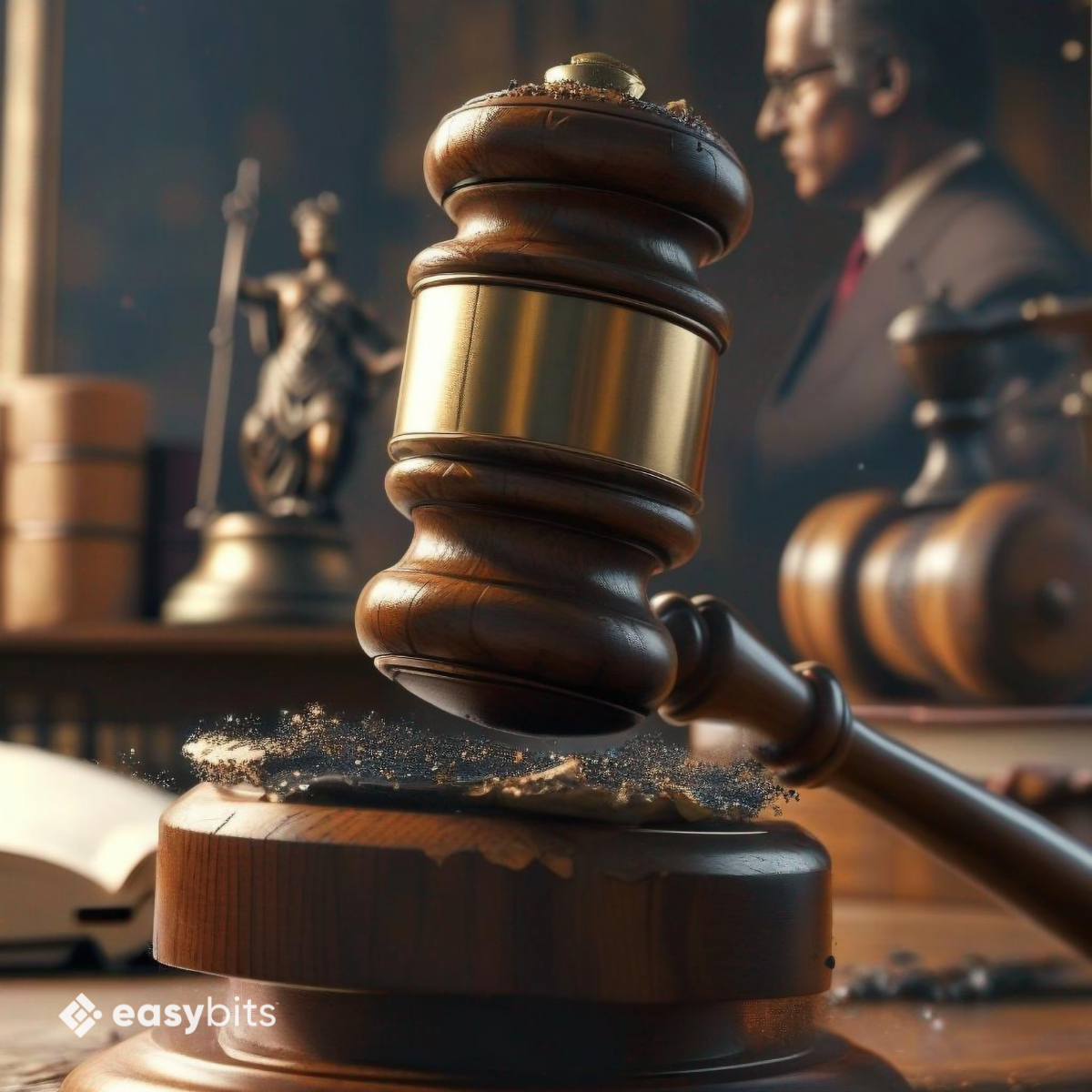
In Europe, the process varies by country. Generally, copyright protection is automatic upon the creation of a work, without the need for formal registration. However, some countries offer voluntary registration systems that can serve as evidence of ownership in disputes. These systems can provide similar benefits to those in the U.S., such as a public record of ownership and legal advantages in enforcement actions.
Comparing both methods:
U.S. Copyright Office
- Automatic Protection: Yes
- Formal Registration Required: No, but highly recommended for additional legal benefits
- Public Record of Ownership: Yes, upon registration
- Eligibility to File Lawsuits: Yes, registration required to file infringement lawsuits
- Statutory Damages and Legal Fees: Potential for statutory damages and recovery of legal fees upon registration
- Additional Legal Benefits: Enhanced legal standing, better protection and enforcement of rights
- Registration Process: Submit application, fee, and copy of work to the U.S. Copyright Office
European Method
- Automatic Protection: Yes
- Formal Registration Required: No, but available in some countries as a voluntary system
- Public Record of Ownership: Yes, in countries with voluntary registration systems
- Eligibility to File Lawsuits: Yes, registration can support legal actions in countries with voluntary systems
- Statutory Damages and Legal Fees: Not typically available; remedies depend on national laws
- Additional Legal Benefits: Enhanced evidence of ownership, potentially better legal standing in disputes (varies by country)
- Registration Process: Varies by country; often involves submitting application and fee to national copyright authority
Can You Copyright AI Art: Legal Insights
Under current copyright law, produced works must have a human author to warrant protections. AI systems are not recognized as legal entities that can hold rights. However, each image prompt represents a creative composition, requiring human judgment and decision-making. Major lawsuits, such as Getty Images suing Stability AI for using millions of images without licenses, are shaping the policy on AI intellectual property.
Artificial Intelligence vs. Human Creativity
Unlike human artists, AI image generators cannot meaningfully claim creative ownership over output. They follow coded instructions to produce images statistically matching prompt text. Human authorship is still the key to enforcing copyright law.
The collaboration between humans and AI technologies, like AI copilots, is set to evolve significantly, potentially reshaping the nature of copyright claims. What is particularly fascinating is how this technology redefines the very concept of copyright and its enforcement. The crux of these changes lies not just in the AI-generated outputs but in the data used to train these models. As AI continues to advance, the spotlight will increasingly be on the provenance and integrity of training data, underlining the importance of transparency and ethical sourcing in AI development. This shift will call for new legal frameworks and industry standards to tackle the complexities introduced by AI, ensuring copyright laws evolve to protect both creators and innovators in this rapidly changing landscape.
Discover how text-to-image models can change the way you approach branding. Dive into our blog article for an in-depth look at their benefits.
Learn more!Can I Sell AI Art?
Yes, you can sell AI-generated artworks legally in most cases. Current guidance suggests selling AI art commercially is permitted under fair use in the United States.
Key points include:
- AI models like DALL-E and Midjourney do not hold copyrights to art they generate based on user prompts. The user prompting the system owns the art.
- Selling AI art for commercial purposes falls under fair use provisions in copyright law.
- Properly crediting the AI system used to generate artwork is recommended.
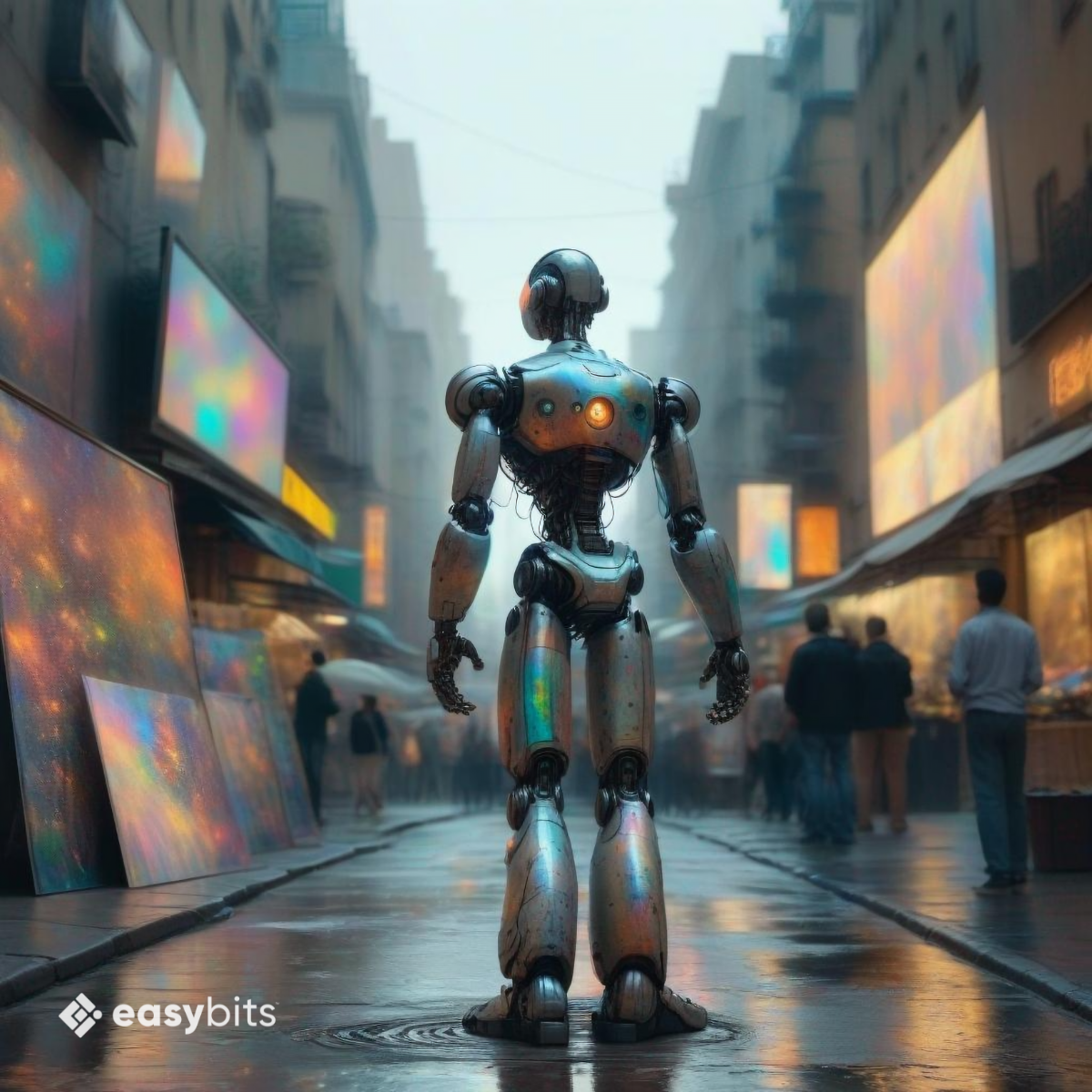
Introduction to Copyright Infringement
Defining Copyright Infringement
Copyright infringement occurs when someone uses, distributes, or publicly displays a creative work without permission from the copyright owner. This includes copying written content, images, videos, music, software code, and other protected material.
💡 easy guide examples for Copyright Infringement:
- A news website publishing an external photo without permission or payment
- A store selling unlicensed merchandise featuring movie characters
- A blogger embedding a YouTube video into a post without the video creator’s authorization
The Importance of Understanding Copyright Infringement
Copyright infringement has legal consequences. The copyright owner can sue for actual damages or statutory damages up to $150,000 per work. Understanding what constitutes infringement enables content creators and publishers to protect their rights.
The financial consequences of copyright infringement in Europe can vary significantly based on the nature and extent of the violation. Here’s a breakdown of the key points regarding potential damages:
- Actual Damages and Profits: If you infringe on someone’s copyright, you might be required to pay actual damages. This means compensating for the market value lost due to the infringement. Additionally, you may have to hand over any profits you made from using the copyrighted material, including both direct and indirect gains.
- Statutory Damages: In some European countries, if actual damages are hard to quantify, the court might award statutory damages instead. For instance, in the UK, these can range from €200 to €150,000 per infringed work. The amount depends on factors like whether the infringement was intentional and the financial impact on the copyright owner.
- Criminal Penalties: Severe cases of commercial copyright infringement can lead to criminal charges. Penalties can be quite harsh, including up to ten years of imprisonment and/or unlimited fines. This is especially true for large-scale or deliberate infringements.
- Injunctions and Legal Costs: Courts can issue injunctions to stop further infringement. Additionally, the infringer may be ordered to cover the plaintiff’s legal expenses and court fees.
These principles can vary from one European country to another, but they offer a general framework for understanding the financial risks of copyright infringement. For more detailed information, consulting with legal experts who specialize in intellectual property laws in your specific jurisdiction is highly recommended.
For further insights, you can check out resources like the European Commission on Intellectual Property Rights, LawBite, and Justia's Intellectual Property Law Center.
The Stance of Key Institutions on AI-Generated Artwork
As AI transforms creative industries, the legal stance on AI art remains a key issue. Both the U.S. and the European Union emphasize that copyright protection requires human authorship. Despite AI's ability to create sophisticated content, current laws in these regions maintain that only works with human creative input are eligible for copyright. The following comparison chart highlights the specific guidelines and approaches of the U.S. and European authorities regarding AI-generated artwork.
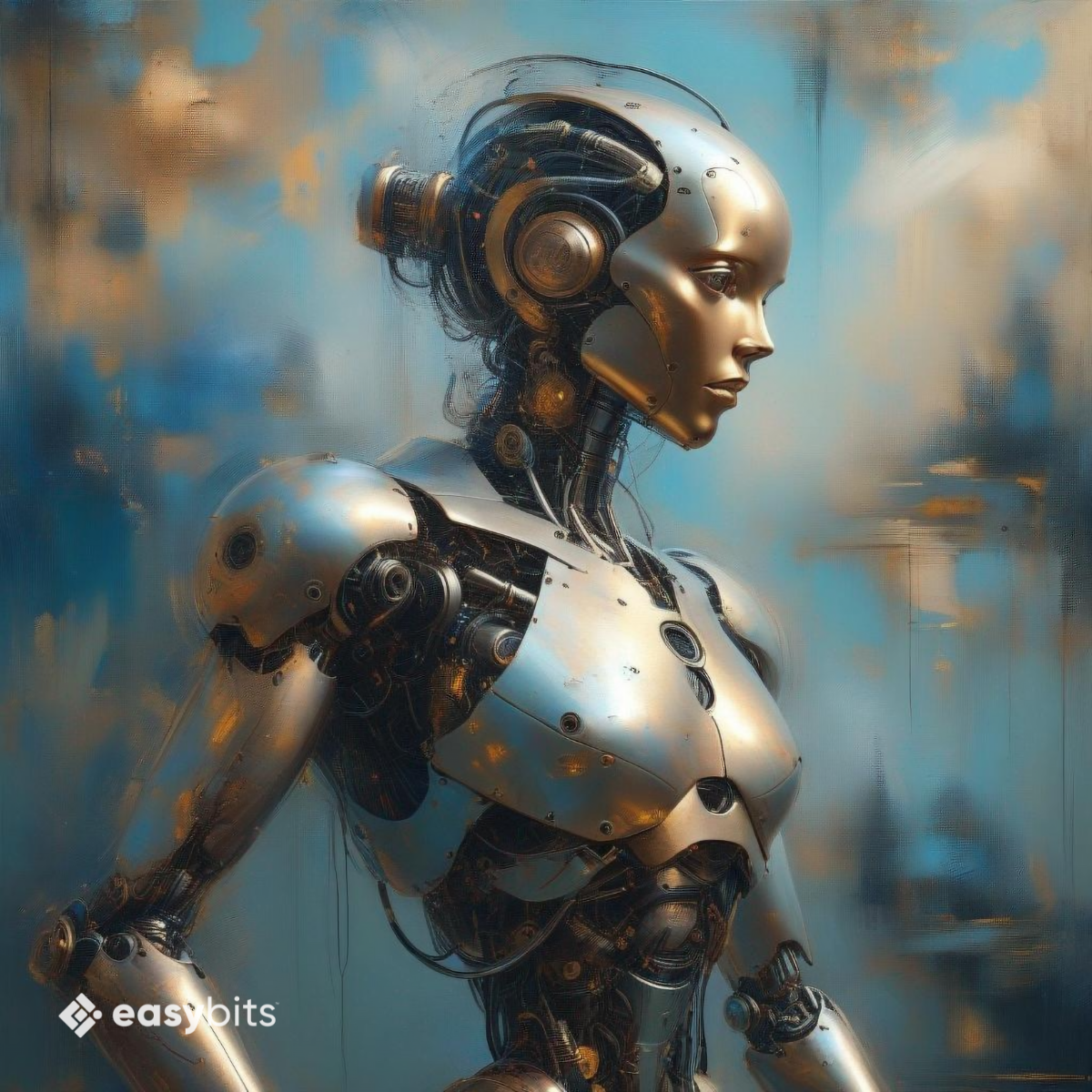
Comparison Chart: AI-Generated Artwork Stance
U.S. Copyright Office
- Eligibility for Copyright Protection: AI systems not eligible, works must reflect human creative expression
- Requirement for Human Authorship: Essential for eligibility
- Recognition of AI Assistance: Recognized if there is human creative contribution
- Official Guidelines: Explicit guidelines excluding AI-generated works without human authorship
- Legal Precedents: Some precedents reinforcing the need for human creativity
- Future Directions: Potential for legal evolution as AI technology advances
European Stance
- Eligibility for Copyright Protection: AI systems not eligible, requires human creative input
- Requirement for Human Authorship: Essential for eligibility
- Recognition of AI Assistance: Recognized if there is human creative contribution
- Official Guidelines: Varies by country, but generally aligned with the EUIPO stance requiring human authorship
- Legal Precedents: Some precedents reinforcing the need for human creativity
- Future Directions: Potential for legal evolution as AI technology advances
The ongoing legal debates regarding AI authorship and inventorship highlight significant differences between the U.S. and European approaches. In the U.S., the Supreme Court case Thaler v. Vidal questions whether an AI can be named as an inventor on a patent application, potentially influencing future copyright policies. Conversely, European courts consistently require human authorship for both patents and copyrights, with numerous precedents upholding this stance. The following chart compares these differing perspectives and their implications for AI-generated works.
Comparison Chart: Supreme Court vs. European Courts on AI Authorship
U.S. Supreme Court (Thaler v. Vidal)
- Current Focus: Whether an AI system can be named the inventor on a patent application
- Potential Influence on Copyright Policy: Could influence AI copyright policy if it addresses computer creativity
- Stance on AI Inventorship/Authors: Pending decision; traditionally requires human inventor
- Legal Precedents: Limited precedents on AI inventorship, potentially groundbreaking
- Guidelines and Regulations: AI not recognized as an inventor under current U.S. patent law
- Future Legal Developments: Potential for significant impact on AI authorship and inventorship policies
European Courts
- Current Focus: Human authorship requirement for copyright and patents
- Potential Influence on Copyright Policy: Unlikely to change current stance without significant legal reform
- Stance on AI Inventorship/Authors: Requires human inventor/author; AI cannot be an inventor or author
- Legal Precedents: Numerous precedents reinforcing human authorship requirement
- Guidelines and Regulations: EPO and national courts require human authorship for patents and copyright
- Future Legal Developments: Likely to continue reinforcing human authorship unless significant legislative changes occur
Ongoing Legal Disputes and AI Art Lawsuits
Notable AI Art Copyright Infringement Cases
Getty Images vs. Stability AI: Alleging unauthorized use of images to train the Stable Diffusion model. Getty Images has filed a lawsuit against Stability AI, accusing the company of using over 12 million images from Getty’s collection without permission to train its AI model, Stable Diffusion. The case involves claims of copyright infringement, trademark infringement, and database rights violations. The court proceedings are ongoing in both the UK and the US, with significant legal questions regarding the definition of "article" under UK law and the use of copyrighted material for AI training purposes.
- Detailed overview: Reed Smith LLP
- Case summary: Penningtons Manches Cooper
- Additional insights: Search Engine Journal
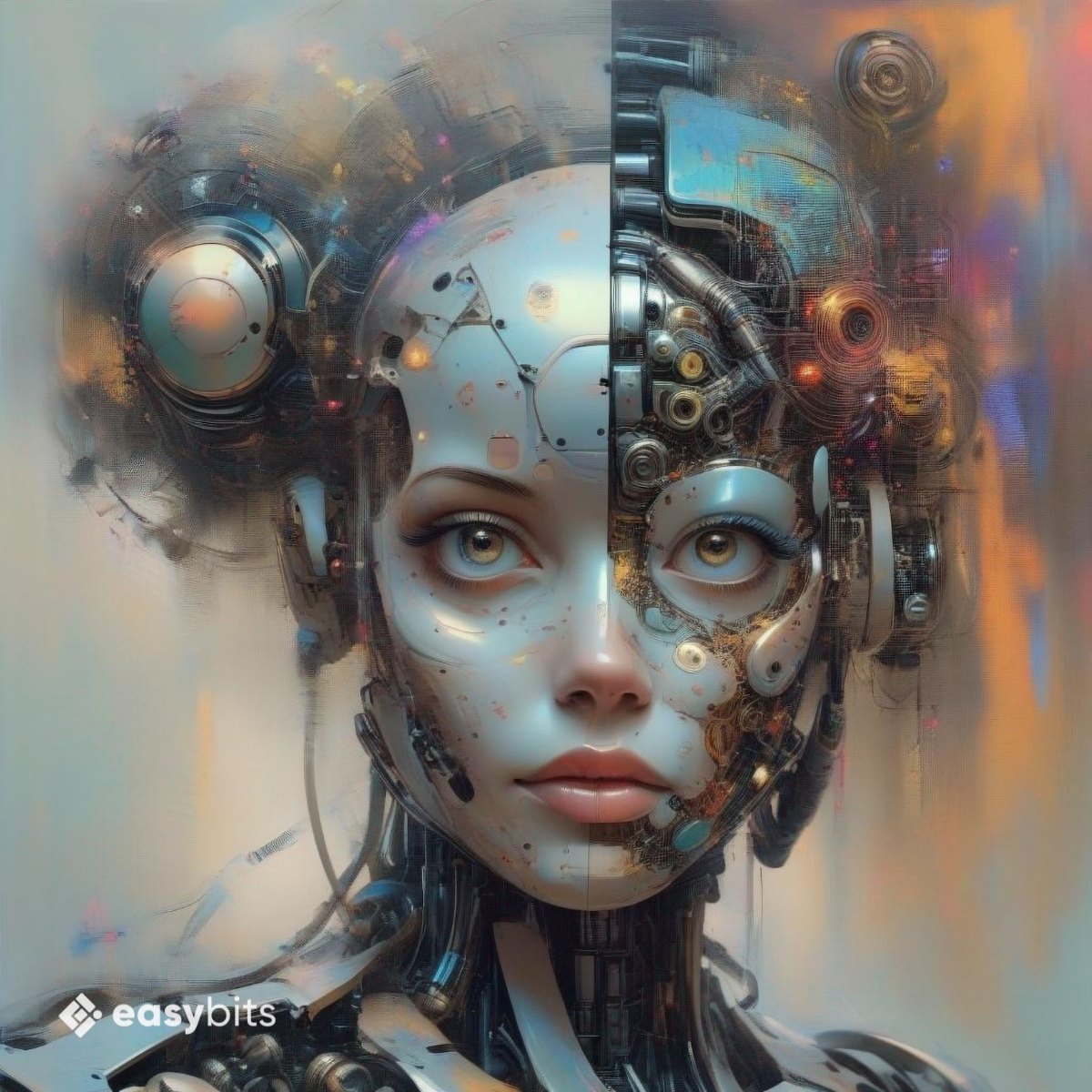
Kristina Kashtanova vs. NightCafe: Alleging use of her style and images without permission. In this case, Kristina Kashtanova has filed a lawsuit against NightCafe, an AI art generator, claiming that the platform used her distinctive artistic style and images without her consent. This case raises important questions about the protection of artistic styles and the rights of artists in the context of AI-generated content.
Adam Calhoun vs. Midjourney: Concerning copyright on the specific AI model architecture itself. Adam Calhoun has initiated legal proceedings against Midjourney, focusing on the copyrightability of the AI model architecture itself. This case explores whether the structure and functioning of AI models can be protected under copyright law, which could have profound implications for AI development and intellectual property rights.
Key Aspects of AI Art and Copyright Law
The following table outlines key aspects such as originality, training data copyright, open-source licensing, the legal framework, ethical considerations, and commercial use. Understanding these factors is essential to navigate potential legal problems and ensure compliance with copyright laws.
Details
- Originality: AI-generated art's originality is debated, questioning if AI creations can be copyrighted
- Training Data Copyright: Specialized models often learn from datasets that include copyrighted artworks
- Open-Source Licensing: Specialized models are released under various open-source licenses, each with its conditions
- Legal Framework: The legal status of AI-generated art varies by country, affecting who can claim copyright
- Ethical Considerations: Attributing the AI model and respecting the rights of data used in training is seen as ethical
- Commercial Use: Utilizing AI-generated art for commercial purposes introduces complexities regarding copyright and licensing
Considerations
- Originality: The level of human involvement affects the copyright eligibility; AI alone cannot hold copyright in many jurisdictions
- Training Data Copyright: Using copyrighted material without permission for training AI can infringe on the rights of original creators
- Open-Source Licensing: Restrictions may limit the commercial use of generated art or require derivative works to be shared under the same license
- Legal Framework: The absence of a unified international framework on AI-generated content leads to uncertainty
- Ethical Considerations: Ethical practices promote transparency and fairness but are not always legally mandated
- Commercial Use: Ensuring all aspects of the generated art are cleared for commercial use is crucial to avoid infringement
Potential Legal Problems
- Originality: Disputes over copyright ownership may arise if AI-generated works are considered not original enough or too derivative of copyrighted materials
- Training Data Copyright: Legal action from copyright holders if their works are used without consent in training datasets, leading to infringement claims
- Open-Source Licensing: Breaching the open-source license can lead to legal penalties, including but not limited to, termination of rights, fines, and mandatory removal of the infringing works
- Legal Framework: The risk of copyright infringement lawsuits due to differing interpretations of laws regarding AI creations across jurisdictions
- Ethical Considerations: Ethical lapses, while not always illegal, can damage reputation, lead to boycotts, or result in legal challenges based on consumer protection laws
- Commercial Use: Financial penalties, cease and desist orders, and costly litigation due to unauthorized use of copyrighted materials or violation of licensing terms
Practical Guidance for Content Creators Using AI
Navigating Copyright Law as a Content Creator
As AI art generation technology rapidly advances, content creators should educate themselves on copyright law to ensure they are legally using AI-generated images. When sourcing images from AI platforms, check their terms of service to understand usage rights. Properly credit the AI platform and comply with its policies.
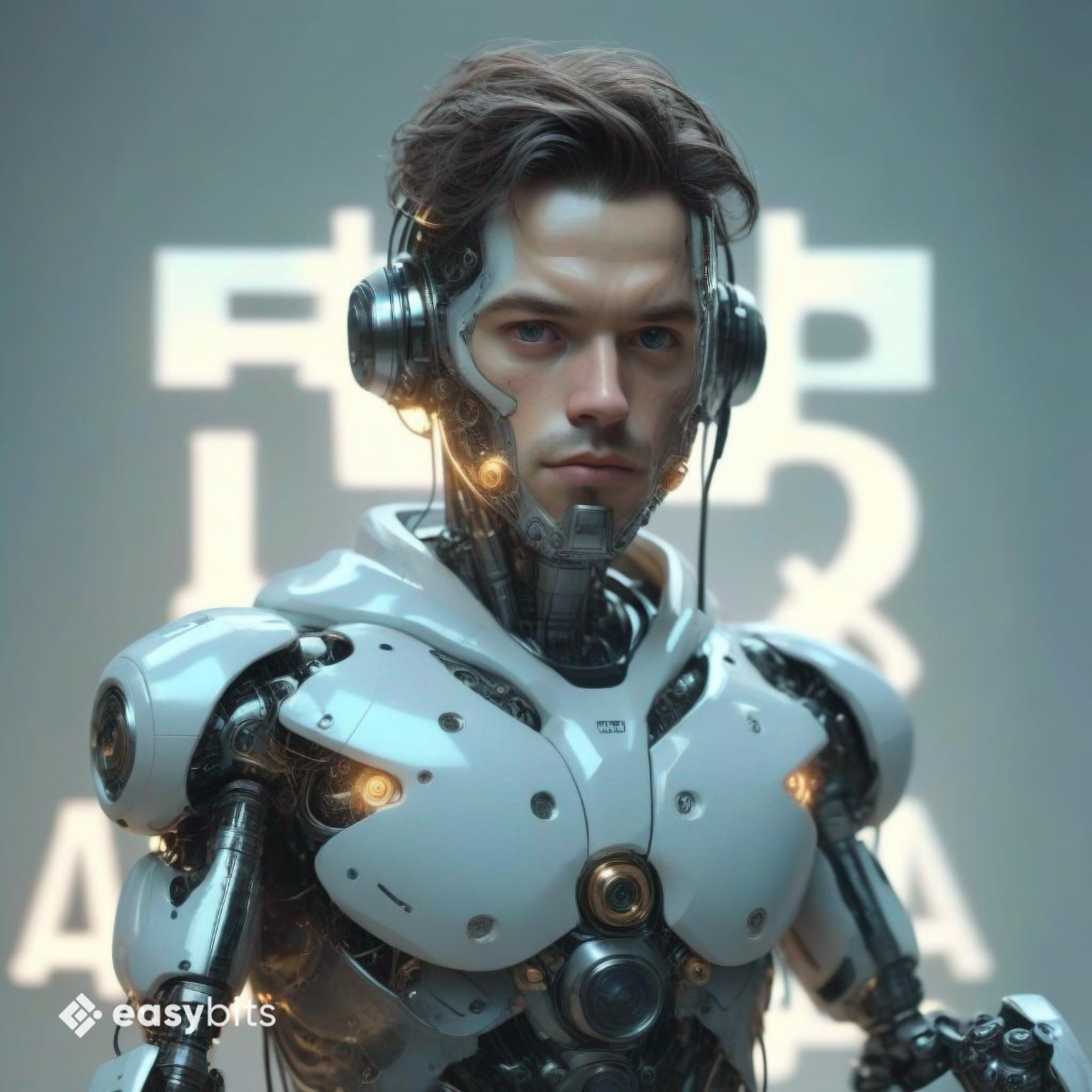
Fair Use and AI: What Creators Should Know
To strengthen a fair use case with AI art, creators should:
- Transform AI images extensively by adding new creative elements
- Use AI art experimentally, not commercially
- Credit the AI platform
- Avoid negatively impacting an AI platform’s market viability
Protecting AI Art Through Alternative Measures
Given copyright uncertainties, creators can consider other protections:
- File provisional patent applications for innovative AI systems
- Seek trademarks for brands using AI art
- Register AI art with blockchain-based services like ScoreDetect to independently verify ownership
Understanding the Complexity of Defining AI Open Source
Data Acquisition
The initial phase involves identifying and gathering relevant datasets that will form the foundation of training. This step determines the quality and scope of information the model will learn from.
Data Preparation
This phase transforms raw data into a format suitable for machine learning, including cleaning data, normalizing or standardizing data, and performing feature engineering.
Model Development (Training)
This involves selecting an appropriate machine learning algorithm and using the prepared data to train the model.
Model Evaluation and Tuning
This phase assesses the trained model’s performance using unseen data and involves fine-tuning the model by adjusting its parameters based on performance metrics.
Deployment and Documentation
The final phase transitions the model from a development setting to a real-world application, including creating comprehensive documentation and a user guide.
The Five Components of Open Source AI
Understanding the licensing considerations for each component of an AI model is crucial for compliance and innovation in open-source AI:
- Code: The source code of the AI model framework.
- Training Code: The scripts, tools, and procedures to prepare the training data and orchestrate the training process.
- Model: The AI model algorithm, architecture, weights and biases, parameters, and hyperparameters.
- Training Data: The various processed iterations of data used to train the AI model.
- Data: Data used for fine-tuning, aligning, knowledge graphs, retrieval data, task-specific data, and prompt engineering.
Open Science vs. Open Source AI
- Open Science: Requires all input and training data, including all tools and procedures, to create the model.
- Open Source AI: Provides the basic components and the results, with the ability to study, modify, share, and use the model, but without the requirement to completely reproduce the model.
The EU’s AI Act Creates Regulatory Complexity for Open-Source AI
Overview of the AI Act
The AI Act categorizes AI systems into four risk levels: unacceptable risk, high risk, limited risk, and minimal risk. The law bans AI systems with unacceptable risk and imposes stringent requirements on high-risk systems.
Impact on Open-Source AI
While open-source AI systems generally escape some of these obligations, this exemption is limited and does not apply to monetized products. Open-source developers are encouraged to implement documentation practices, but there is little guidance on how this should be done.
Specific Rules for Open-Source AI
The AI Act does not provide exemptions for open-source AI systems involved in high-risk categories. Third parties making open-source AI products publicly available are exempt only if they do not monetize these products. However, companies offering paid support or using targeted ads would not qualify for this exemption.
Loopholes and Exemptions
AI systems developed exclusively for scientific research and development are exempt from the AI Act's rules. However, AI models created for academic purposes under open-source licenses can be repurposed for commercial use, creating a loophole.
GPAI Models and Systemic Risk
The AI Act imposes unique rules for General Purpose AI (GPAI) models. Open-source GPAI models are exempt from certain documentation requirements unless they present a systemic risk. All GPAI models must disclose training data content and ensure compliance with EU copyright law.
Impact on Open-Source AI Projects
For projects based on decentralized contributions, the complexity of these new regulations could hinder the development of open-source AI in the EU.
Key Sections from the AI Act Relating to Open-Source AI
- Recital 57e: Exempts third parties making open-source AI components publicly available from complying with certain obligations unless they monetize these products.
- Recital 60i: Supports transparency and openness for general-purpose AI models released under free and open-source licenses.
- Article 2 (Scope), 5a: Exempts AI systems developed for scientific research and development from the AI Act.
- Article 28 (Responsibilities along the AI value chain), 2b: Requires third parties supplying AI components to specify necessary information to comply with the AI Act.
Getty Images and AI Copyright Assurance
Getty Images' Generative AI Model
Getty Images has introduced a generative AI model built by Nvidia, trained solely on images from Getty’s library, ensuring it is free from copyrighted content.
Interested in how text-to-image models are revolutionizing the stock photo industry? Read our blog article for a comprehensive guide.
Find out more!Legal Certainty and Copyright Challenges
This move comes amid a surge in generative AI systems and numerous legal battles over copyrighted content. Getty Images itself has filed a lawsuit against Stability AI for using millions of its images without permission.
Compensating Creatives and Ensuring Ethical Use
Getty Images offers a Spotify-style compensation model to creatives for using their work in the AI model, ensuring consent from the creators.
Industry Reactions and Comparisons
Other companies are taking similar steps to ensure ethical use of generative AI. Adobe launched Firefly, trained on copyright-free content, and Shutterstock plans to reimburse artists for the use of their works in AI training.
The Broader Implications
The development of Getty’s model highlights the importance of ethical considerations and legal certainty in the AI industry. Companies must navigate the complexities of copyright law to protect intellectual property and ensure fair compensation for creators.
Conclusion
Creators and developers must stay informed and proactive when navigating the ever-changing legal landscape of AI-generated art. By keeping up-to-date with legal developments and best practices, they can fully leverage AI technology while protecting their intellectual property. This proactive approach not only safeguards their creations but also contributes to a fair and transparent digital environment.
Staying informed builds confidence in embracing AI advancements. Understanding legal boundaries fosters innovation and helps mitigate risks associated with copyright infringement. By knowing the rules and regulations, creators can focus on pushing the boundaries of what AI can do, without the fear of legal repercussions.
In essence, being well-versed in the legal aspects of AI-generated art allows creators and developers to use AI to its fullest potential, ensuring their work is both groundbreaking and legally protected.
Ready to explore AI art yourself? Sign up now to effortlessly deploy your favorite text-to-image model from Hugging Face into your preferred messenger apps with easybits. Begin your AI journey today!
Sign up now!Sources
- Quora. "Are AI models copyrightable?" Available here
- Artificial Intelligence Act. "What is the EU AI Act?" Available here
- European Parliament. "EU AI Act: first regulation on artificial intelligence." Available here
- The Data Scientist. "The Legal Implications Of AI-Generated Content In Copyright Law." Available here
- Law of the Ledger. "Solving Open Source Problems with AI Code Generators: Legal Issues and Solutions." Available here
- LinkedIn. "The Legal Copyright Battle Against AI: Closed vs. Open-Source AI" by Tobias Jensen. Available here
- Mintz. "Lensa: Are AI Art Generators Copyright Infringers?" Available here
- Velvetech. "Generative AI Risks and Regulatory Issues." Available here
- The National Law Review. "Generative AI Revolution: Key Legal Considerations for the Fashion & Retail Industry." Available here
- Technology Review. "Getty Images promises its new AI doesn’t contain copyrighted art." Available here
- White & Case. "Pre-final text of EU's AI Act leaked online." Available here
- Center for Data Innovation. "The EU's AI Act Creates Regulatory Complexity for Open-Source AI." Available here
- LF AI & Data Foundation. "Adapting the Definition of Open Source to AI: The Quest for the Holy Grail." Available here
- AI Models. "Licensing and Legal Considerations for Open Source AI." Available here
- ScoreDetect. "What is Copyright Infringement: A Basic Guide." Available here
- ScoreDetect. "Can You Copyright AI Art: Legal Insights." Available here
Check this video to find out more
